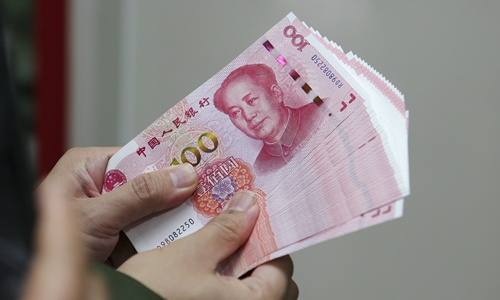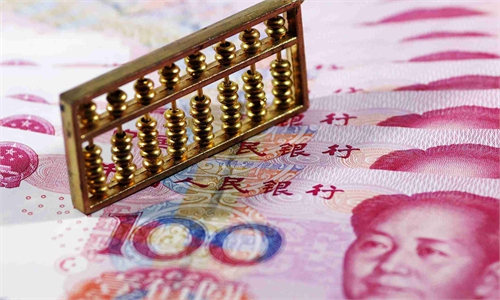
Renminbi Photo: VCG
The yuan's share of global payments reached its second-highest level in June since tracking began in October 2010, data from the Society for Worldwide Interbank Financial Telecommunication (SWIFT) showed on Thursday.
The continuous expansion comes amid the steady progress of the currency's internationalization, as economies around the world, particularly emerging ones, seek an alternative to the US dollar.
The yuan has emerged as a popular choice due to the high level of mutual trust and cooperation.
In June, the yuan accounted for 2.77 percent of payments, up from 2.54 percent in May, according to SWIFT.
The value of yuan payments increased by 12 percent from May, while payments in all currencies grew by 2.5 percent.
The yuan remained the fifth most active currency.
The reading for June was the second-highest ever.
The share held by the US dollar, the world's most active currency, dropped to 42.02 percent in June from 42.6 percent in May.
The figures reflect the rising volume of yuan settlements in foreign trade and the growing appeal of the currency in international payments and settlements amid a global search for an alternative to the US dollar, Chinese analysts noted.
Refineries in India are reportedly paying for Russian crude purchases in yuan, as an alternative to the US dollar.
More than 80 percent of commercial transactions between Russia and China are conducted in rubles and yuan, Russian President Vladimir Putin said in early July, according to Russia's TASS news agency.
Argentina met a payment obligation with the IMF in yuan worth the equivalent of $1 billion for the first time.
Analysts said that the yuan's internationalization has been accelerated by China's rising international influence and its expanding role in global governance.
This year, the yuan has been adopted in a variety of ways, such as being used as the settlement currency for commodities between friendly countries, or used as a reference price among countries, they noted.
"The scope of the use of the yuan, the places where it is used, and the fields of use, including the amount and volume of yuan transactions, are constantly expanding," Wang Peng, a research fellow at the Beijing Academy of Social Sciences, told the Global Times.
Cross-border yuan settlements as a proportion of global trade rose to 3.2 percent in May from 2.1 percent at the beginning of the year, while China's share of global trade remained roughly the same, according to S&P Global.
The "yuan could soon become the world's fourth most-traded currency," Wang said. "At the fastest possible pace, it could attain that status this year."
China and its trading partners are beginning to prefer each other's currencies for trade settlements, which is a voluntary choice rather than a one-sided push by China, analysts pointed out.
The trend of yuan internationalization is irreversible. Although the yuan exchange rate is facing pressure from the appreciating US dollar, the situation will not affect the process of the yuan's internationalization, because exchange rate pressure is a short-term test, while yuan internationalization is a long-term process, Wang said.
Global Times

